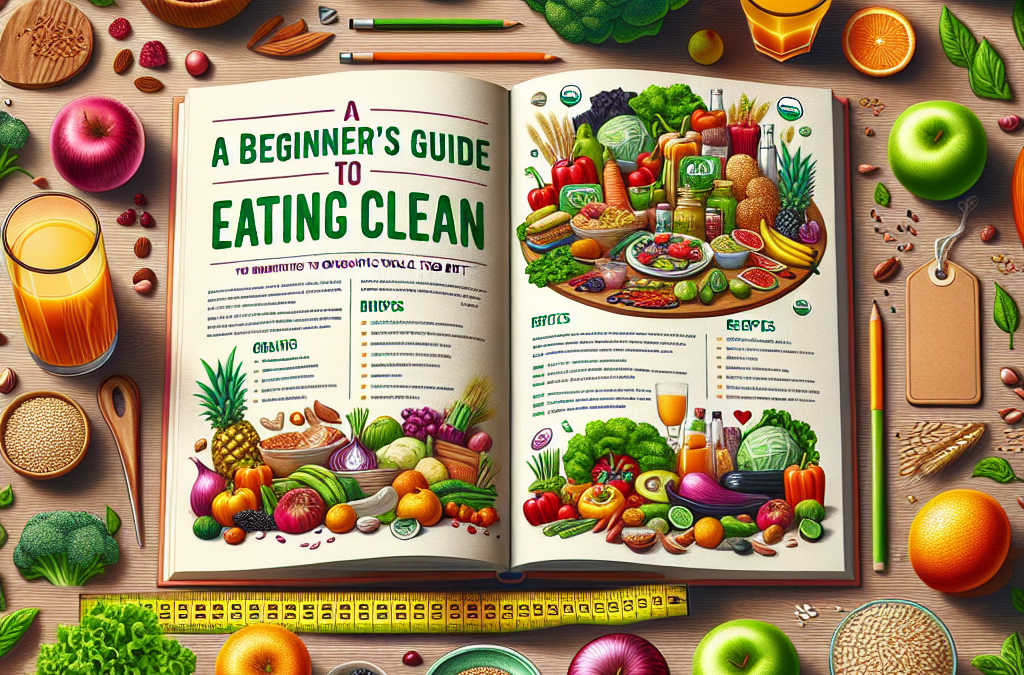Understanding What Whole Foods Are
Defining Whole Foods
When I first dove into the world of healthy eating, I was gripped by the idea of whole foods. Simply put, whole foods are foods that are as close to their natural state as possible. This means they come without any processing or artificial ingredients. Think fruits, vegetables, nuts, seeds, and whole grains. It’s like hitting the reset button on your nutrition!
Why does this matter? Well, when you eat whole foods, you’re nourishing your body with vitamins, minerals, and essential nutrients that you often miss in processed foods. It’s about giving your body the things it truly craves, instead of filling it with empty calories that won’t do much for your health.
For example, swapping out white bread for whole grain bread can drastically improve your fiber intake, and studies show that a fiber-rich diet can lead to better digestive health. So, understanding and embracing whole foods is the first step toward a healthier you!
Identifying Organic Foods
Now, let’s spice things up and talk about organic foods. Organic foods are grown without synthetic fertilizers or pesticides, which is crucial for those of us wanting to eat clean. When I started shopping for groceries, I was shocked to see how many products claim to be organic—but you really have to look for the certification.
Shopping organic means supporting farming practices that are better for the environment, too. Those little icons on the packaging mean that you’re buying food that’s not only good for you but also good for our planet. It feels good—like you’re doing your part!
Although organic options can be pricier, remember that you can prioritize by focusing on the EWG’s “Dirty Dozen,” which lists fruits and veggies that are most contaminated by pesticides. By going organic with those specific items, you’re reducing your exposure and saving some bucks!
The Importance of Seasonal Eating
Eating seasonally is like having a secret weapon in the quest for a clean diet. When I began to pay attention to what’s in season, I really noticed a change in my meals—and my mood! Seasonal fruits and vegetables are fresher, tastier, and often more affordable. Plus, buying local helps support your community and cuts down on transportation emissions.
But the benefits don’t stop there! Seasonal eating often means that you’re getting produce at its peak nutritional value. For example, summer tomatoes pack a lot more flavor and nutrients compared to their off-season counterparts, which have traveled halfway around the world.
So, I encourage you to hit up your local farmer’s market or even start a small garden. Trust me, there’s nothing quite like the taste of homegrown veggies right off the vine!
How to Transition to a Whole Food Diet
Small Changes Matter
The idea of restructuring your entire diet can feel overwhelming, but let’s start small! I like to describe it as baby steps. Focus on incorporating one or two whole foods into your meals each day. For instance, switch your usual snack to a handful of almonds instead of those boxed cookies. It doesn’t have to be drastic!
I found that gradually replacing processed foods made it easier for me to stick with my new eating habits. If you’re a fan of breakfast cereals, consider switching to oatmeal topped with fruits and nuts. It might take a little while to adjust, but your body will thank you in the long run.
Documenting my journey helped me stay on track—I kept a food journal that made me super aware of what I ate and how I felt afterward. With time, those small changes add up to something significant!
Meal Planning Is Your Best Friend
Alright, my fellow foodies, here’s where the magic happens—meal planning! This was a game-changer for me. I started planning my meals for the week ahead, which not only saved me time but also kept me motivated. Trust me, when you have a plan, you’re less likely to grab those chips when you’re starving!
Meal prep can be a fun Sunday ritual. I suggest cooking in batches—think soups, stews, and stir-fries that can be portioned out for easy lunches during the week. I often make meals that are super versatile, so if I cook quinoa, I can mix it with different veggies and proteins throughout the week.
Plus, when you plan, you can ensure you’re getting a variety of nutrients. You avoid that dreaded “what’s for dinner?” situation that leads to those less healthy choices!
Listening to Your Body
One important thing I’ve learned is to listen to my body. The incredible thing about switching to whole foods is that you’ll start to notice how your body responds to different foods. It’s all about being aware and adapting. For instance, if eating a big plate of pasta leaves you feeling sluggish, maybe that’s your sign to focus on whole grains instead!
Get an Amazing Discount on Best Organic SuperFood Product!
Practicing mindful eating can help you tune in. Allow yourself time to savor each bite—this not only enhances your experience but gives your body a chance to recognize its hunger and fullness signals. It’s amazing how much you can discover about your preferences and body by simply slowing things down.
Connecting with your food in such a deep way can be incredibly liberating; it becomes less about strict rules and more about joy and comfort in what you eat!
Creating a Supportive Environment
Stocking Your Kitchen
When I decided to embark on this whole food journey, I took a good hard look at my kitchen and pantry. The first step? Clearing out anything that didn’t align with my health goals. Don’t get me wrong, your kitchen doesn’t have to be a clean-eating fortress, but getting rid of junk food made it so much easier to choose healthier snacks and meals.
I also made sure to stock up on whole food staples like beans, lentils, whole grains, nuts, and plenty of fresh produce. Having these ingredients on hand has made impromptu cooking a breeze! If you can grab some veggies and grains without any fuss, you’ll be more inclined to whip up something nutritious.
Plus, organizing your food can help too. I like to put healthier snacks at eye level and hide away less healthy options. Out of sight, out of mind—am I right?
Finding Community
Surrounding myself with likeminded folks was a real boost on this journey. Whether it’s joining a local class focused on healthy cooking, having friends who share recipes, or even participating in online forums. Having a community can help you stay motivated, and you’ll learn so much from others!
Make it a habit to share your experiences and even cook together. I love hosting “clean eating” dinner parties with friends where we each bring a whole food dish to share. It’s not only fun, but it also opens up a wealth of creative meal ideas.
And don’t forget social media—a lot of people share their whole food journeys and it can be inspiring and informative to see what others are whipping up in their kitchens!
Setting Realistic Goals
Let’s be real: change doesn’t happen overnight. Setting realistic goals is crucial for sustainable progress. When I started, I aimed for achievable weekly goals—like trying a new recipe or adding a new vegetable to my meals. This helped me stay motivated without feeling overwhelmed.
Celebrate the small victories! If you notice you’re opting for whole foods more frequently, give yourself a pat on the back. Every step counts. Creating a meal lineup for the week or finally mastering a recipe can feel incredibly rewarding. And trust me, the more you practice, the better you’ll get!
In the end, remember that the journey is personal. As you set your goals, don’t compare yourself to others. Focus on your own path, and enjoy discovering the joy of eating clean!
Frequently Asked Questions
1. What are whole foods, and why should I eat them?
Whole foods are unprocessed or minimally processed foods that retain their natural nutrients. Incorporating them into your diet can improve your health by providing your body with the essential vitamins and minerals it needs.
2. Are organic foods really worth the extra cost?
Organic foods are grown without harmful pesticides or synthetic fertilizers, which can be better for your health and the environment. While they can be pricier, choosing organic for the “Dirty Dozen” items can help you make informed decisions.
3. How do I start meal planning for a whole food diet?
Begin by choosing a day to plan your meals for the week, making a shopping list of whole food items you need, and prepping meals in advance. This helps with time management and sticking to your dietary goals!
4. How can I make healthy eating enjoyable?
Try to experiment with different recipes, involve friends in cooking, and make it a social experience. Also, savor your meals and take your time to enjoy the food—you may find it becomes a delightful part of your day!
5. How do I stay motivated on my clean eating journey?
Find a supportive community, share your goals, and track your progress. Celebrating the small victories and connecting with others can significantly boost your motivation and keep you inspired!




